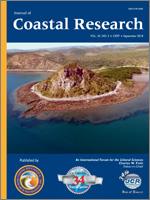Lindner, B.L. and Neuhauser, A., 2018. Climatology and variability of tropical cyclones affecting Charleston, South Carolina.
Communities benefit from site-specific examinations of tropical cyclone climatology. The impact data from a tropical cyclone climatology are useful for planning purposes for emergency managers, medical facilities, building and infrastructure codes, utility and communications design, insurance, and wildlife and resource management. To that end, per an analysis of National Hurricane Center data for the years 1851 to 2015, a chronological list of tropical cyclones that passed within 139 km (75 nautical miles) of Charleston, South Carolina was compiled. Date, intensity, approach angle, and translational velocity were catalogued for each system upon closest approach. The return period is approximately 1.5 years for tropical storms and hurricanes, 3.8 years for hurricanes, and 28 years for major hurricanes. The frequency of zero-strike and multistrike seasons is well reproduced by a Poisson distribution, implying random strikes. The seasonality of tropical cyclones in Charleston shows a secondary maximum early in the hurricane season, likely due to the numerous diminished tropical cyclones that originated in or passed through the Gulf of Mexico. In fact, there has been an increase in recent decades in the occurrence of early-season tropical cyclones. The large fraction of tropical cyclones that affect Charleston after originating in or passing through the Gulf of Mexico can also be seen in the data for approach angle (most strikes by tropical storms were by those that came over land) as well as in the data for translational velocities (higher for tropical storms than for hurricanes). Charleston not only experienced more tropical cyclones during the years 1871–1910, but these cyclones also had higher-than-average translational velocities at closest approach.





